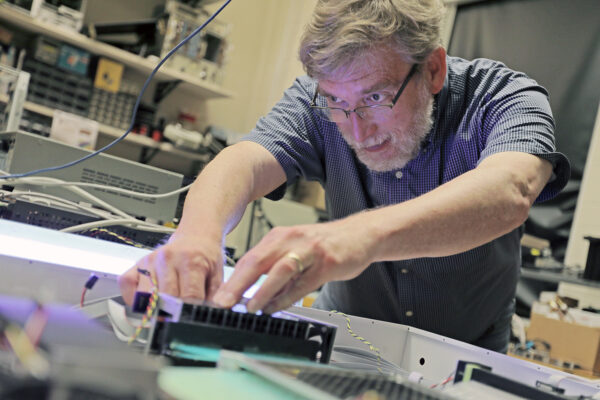James Buckley is a professor of physics in Arts & Sciences at WashU who specializes in astrophysical research in high-energy phenomena. His research interests include direct and indirect searches for dark matter; high energy astrophysics and gamma-ray astronomy; and multi-wavelength/multi-messenger physics of active galaxies, gamma-ray bursts and supernovae remnants.

James Buckley
Professor of Physics in Arts & Sciences
Contact Information
- Phone: 314-935-7607
- Email: buckley@wustl.edu
- Website: Website
Media Contact
Stories
Buckley awarded $4.9 million to develop gamma ray astronomy mission
James H. Buckley, professor of physics in Arts & Sciences, received a $4.9 million award from NASA to build a demonstration version of a large satellite experiment for gamma-ray astronomy research. Washington University leads the entire effort to develop the instrument, which is planned to launch on a scientific balloon in 2024.
Astrophysicists spot pulsed radiation from Crab Nebula that wasn’t supposed to be there
The VERITAS array of telescopes has detected pulsed gamma rays from the pulsar at the heart of the Crab Nebula that have energies far higher than the common theoretical models can explain. The finding is one of the most exciting in the telescope’s history, according to consortium members at Washington University in St. Louis.
Washington University physicists are closing in on the origin of cosmic rays
Nearly 100 years after the discovery of cosmic rays, a new type of gamma-ray telescope is finally allowing physicists to make images of cosmic-ray nurseries.
Physicists help find gamma rays from black hole
An international collaboration of scientists discovers an outburst of very-high-energy gamma radiation from the giant radio galaxy Messier 87, accompanied by a strong rise of the radio flux measured from the direct vicinity of its supermassive black hole. The findings shed new light on the understanding of gamma rays in black holes.
Pinpointing origin of gamma rays from a supermassive black hole
An international collaboration of 390 scientists reports the discovery of an outburst of very-high-energy gamma radiation from the giant radio galaxy Messier 87 (M 87), accompanied by a strong rise of the radio flux measured from the direct vicinity of its supermassive black hole. The combined results give first experimental evidence that particles are accelerated to extremely high energies in the immediate vicinity of a supermassive black hole and then emit the observed gamma rays. The gamma rays have energies a trillion times higher than the energy of visible light. Washington University in St. Louis physicists helped coordinate this cooperative project, the results of which appear in the July 2 Science Express, the advance online publication of the journal Science.

